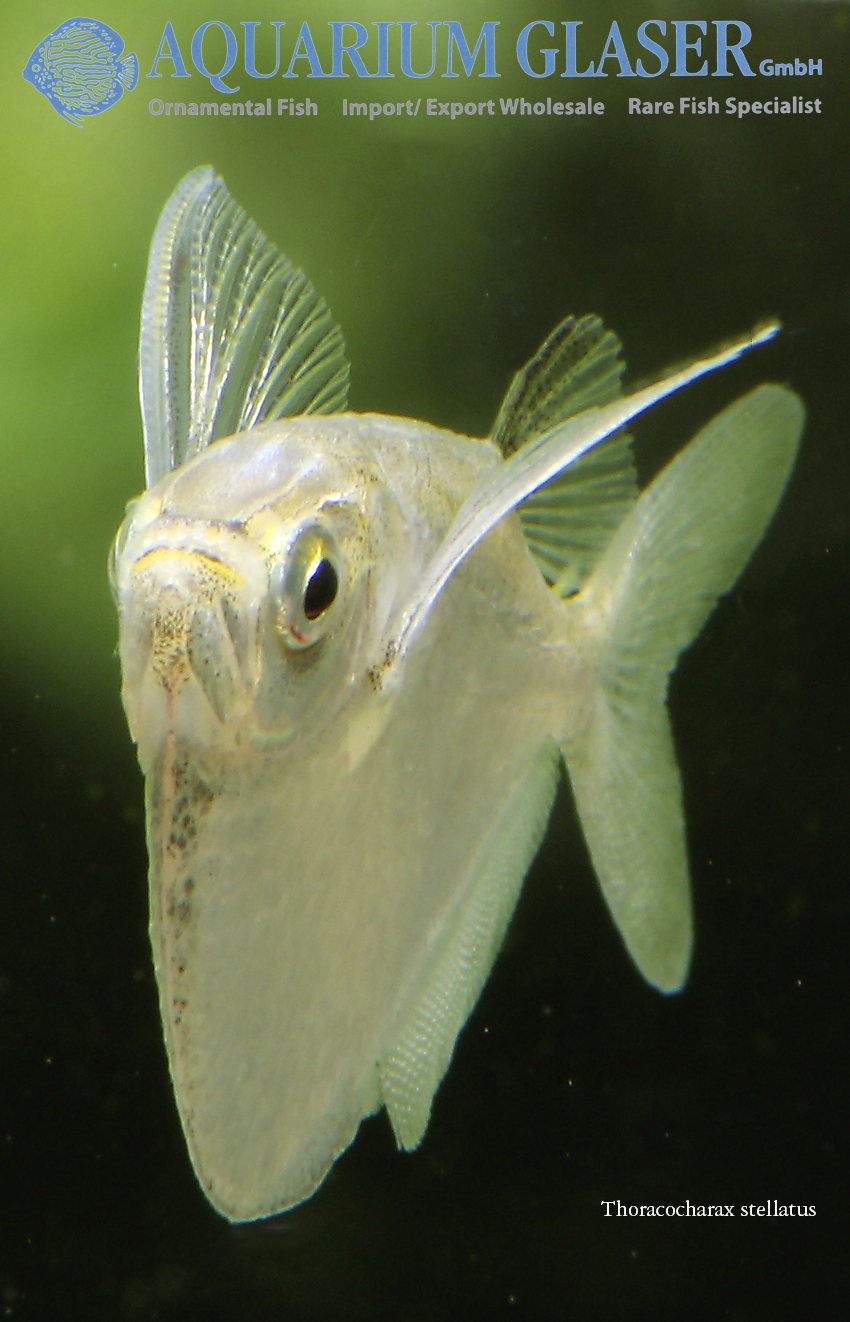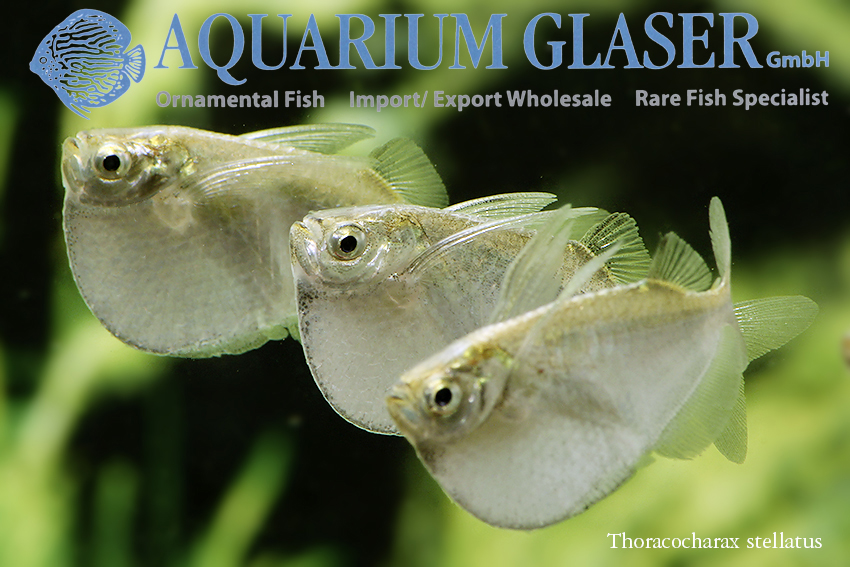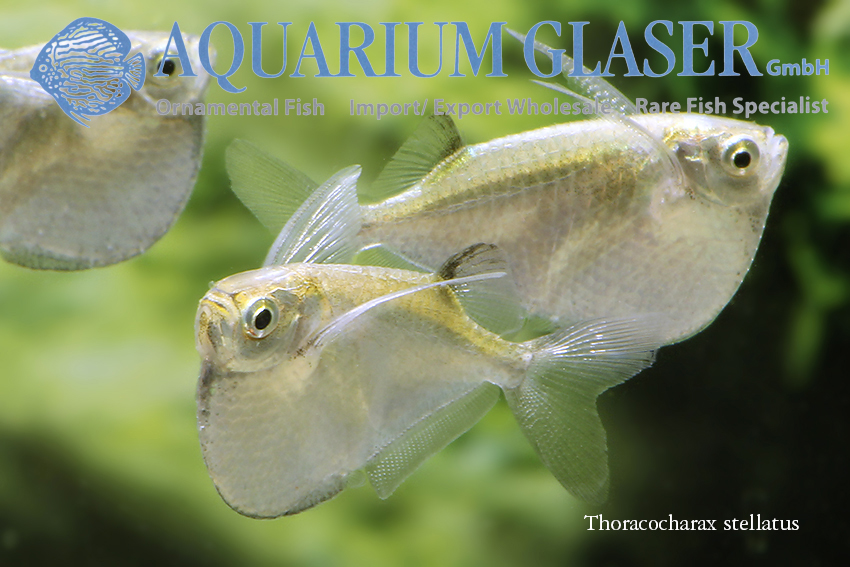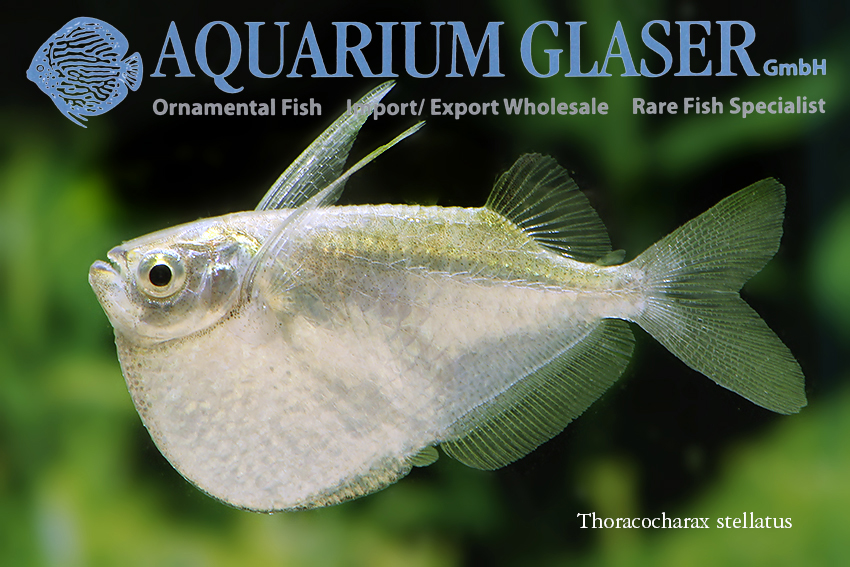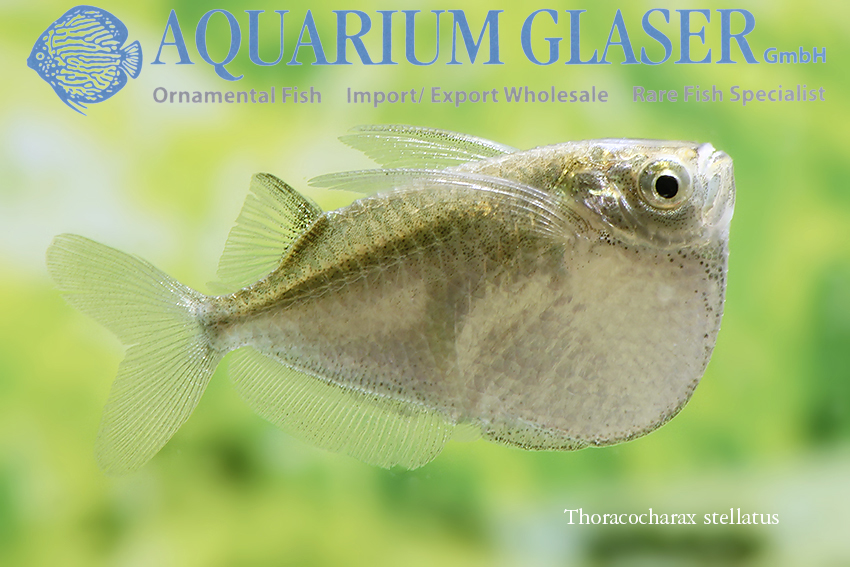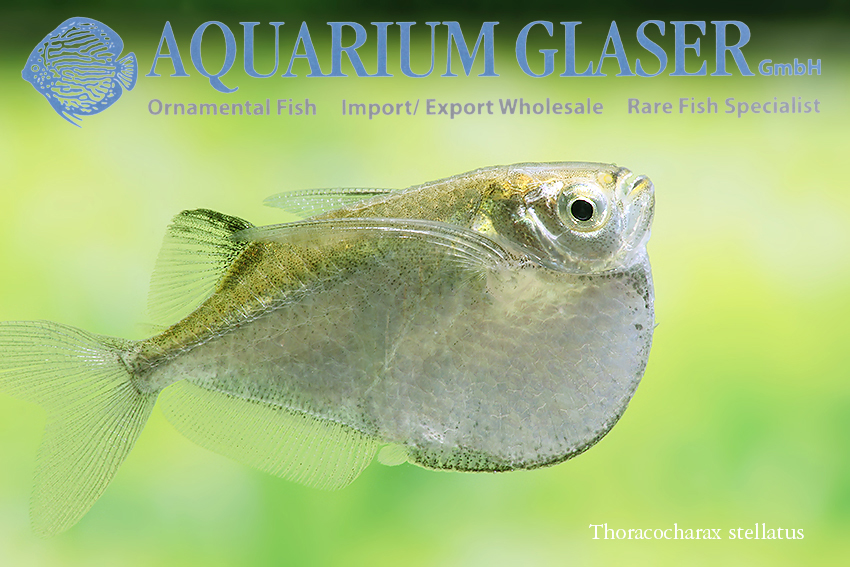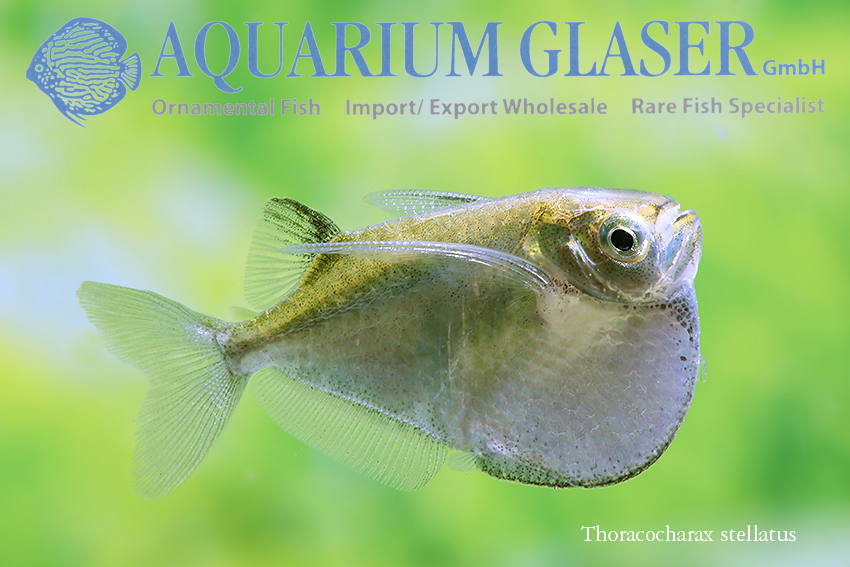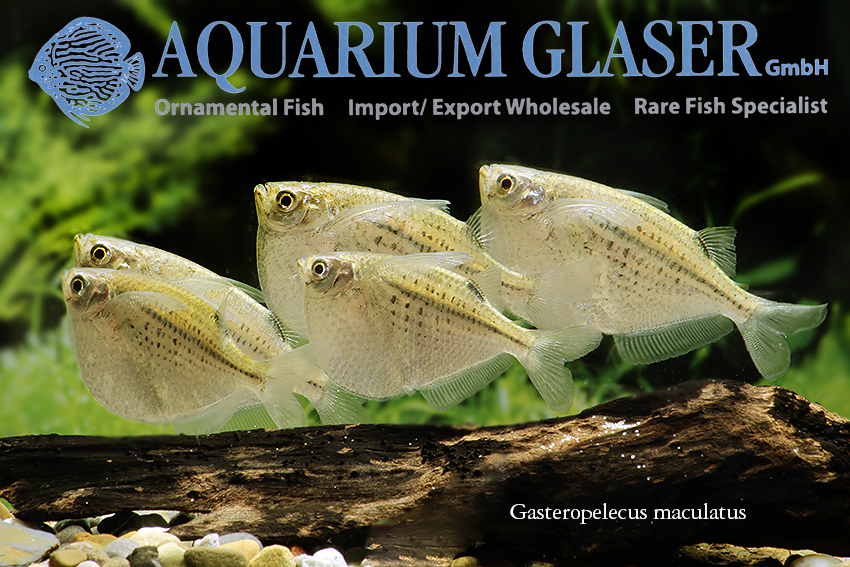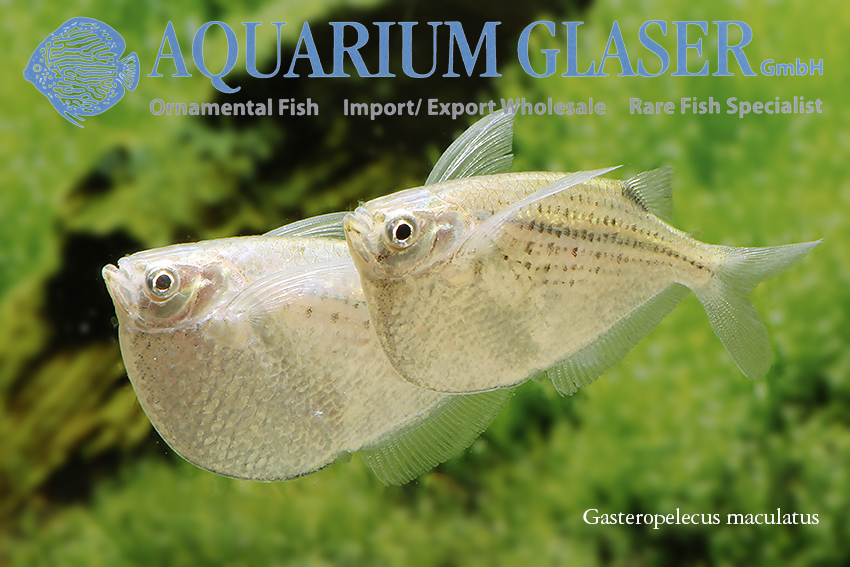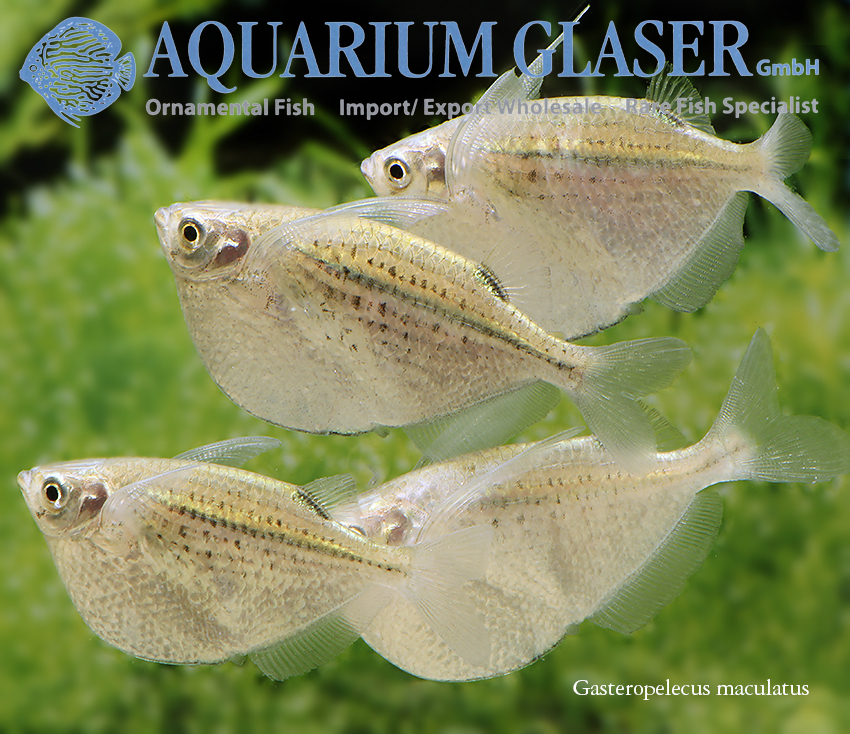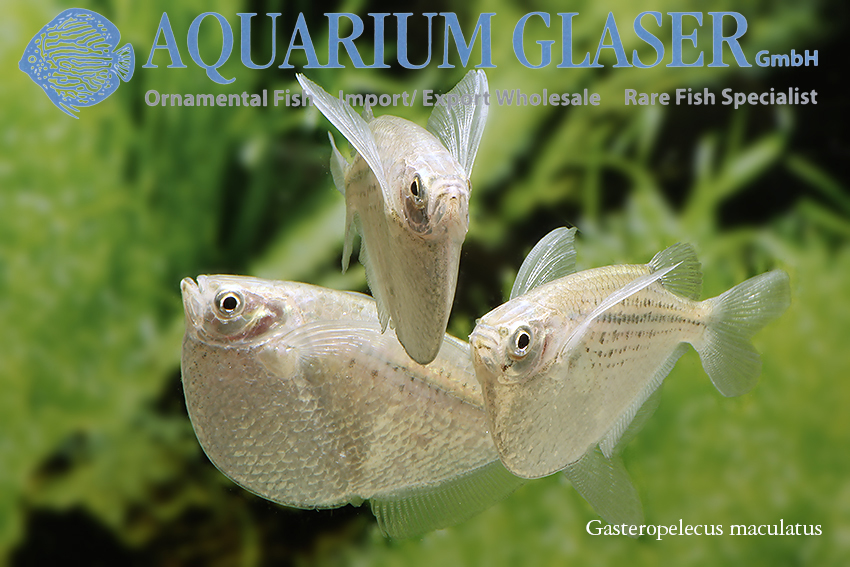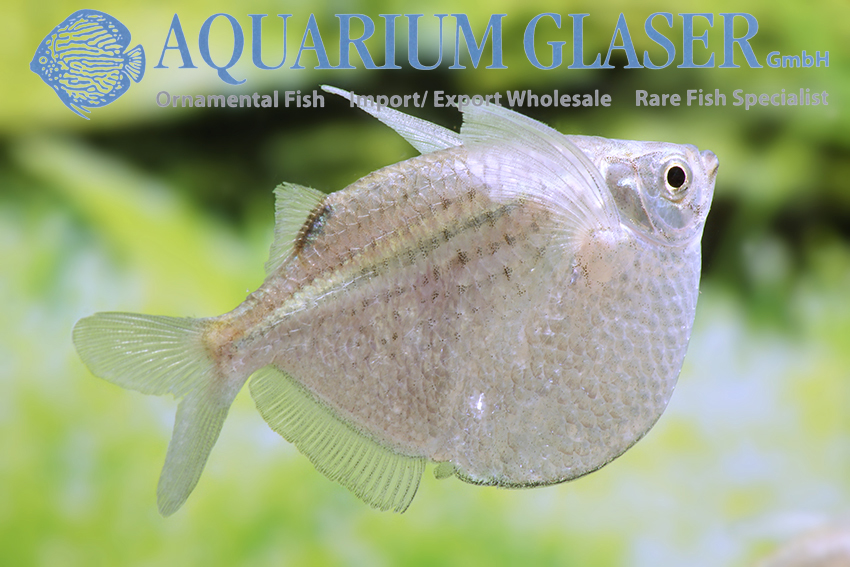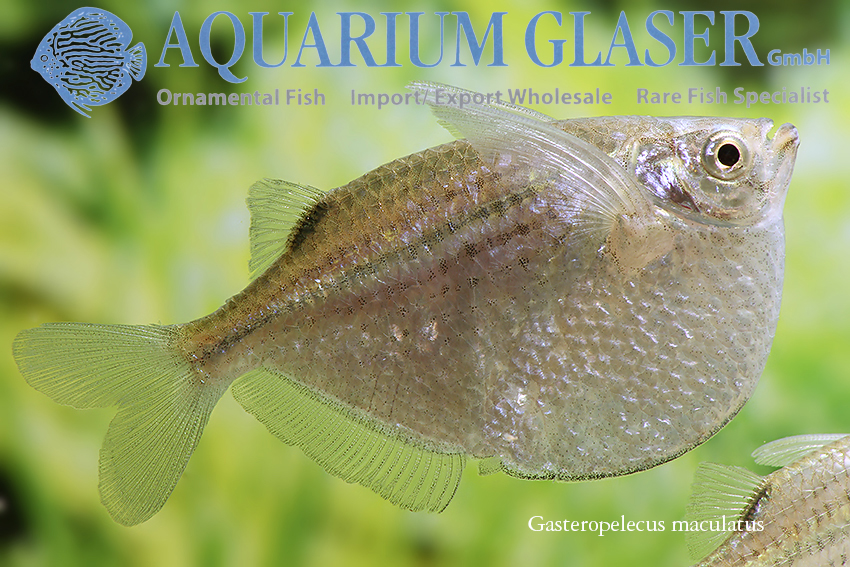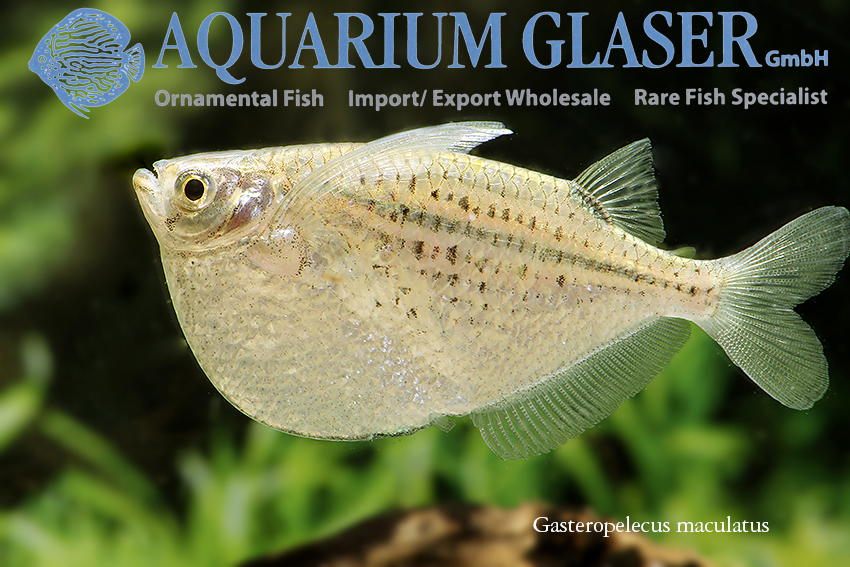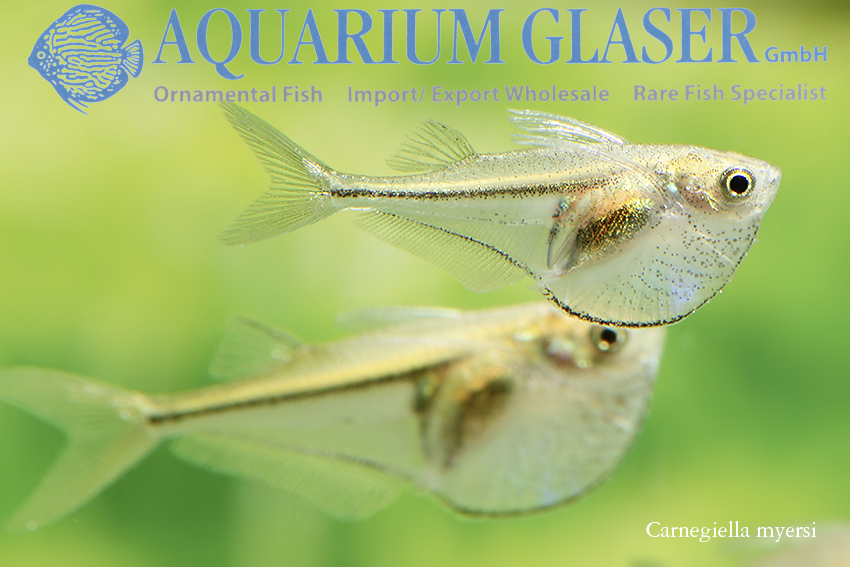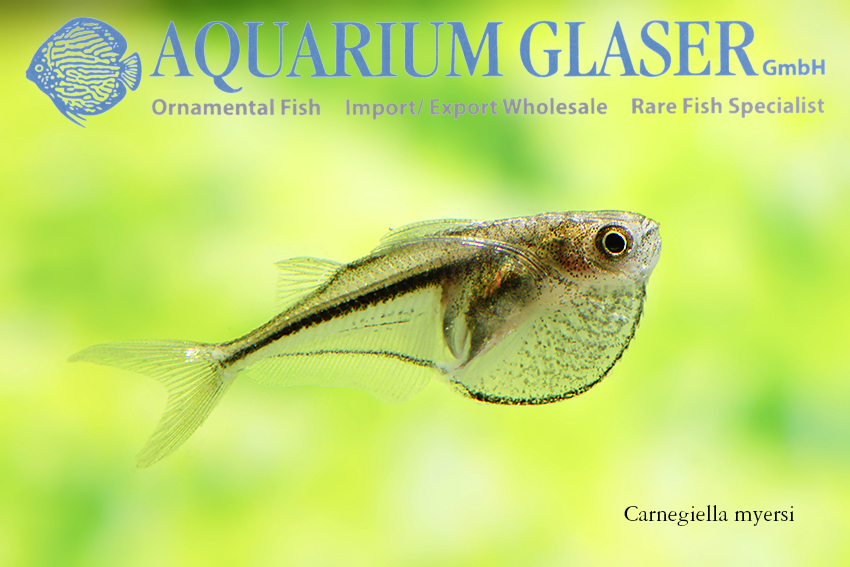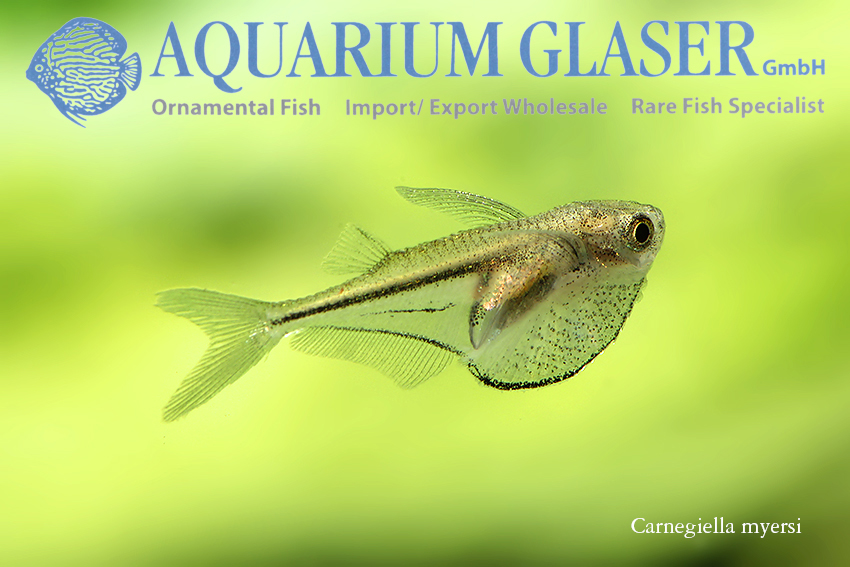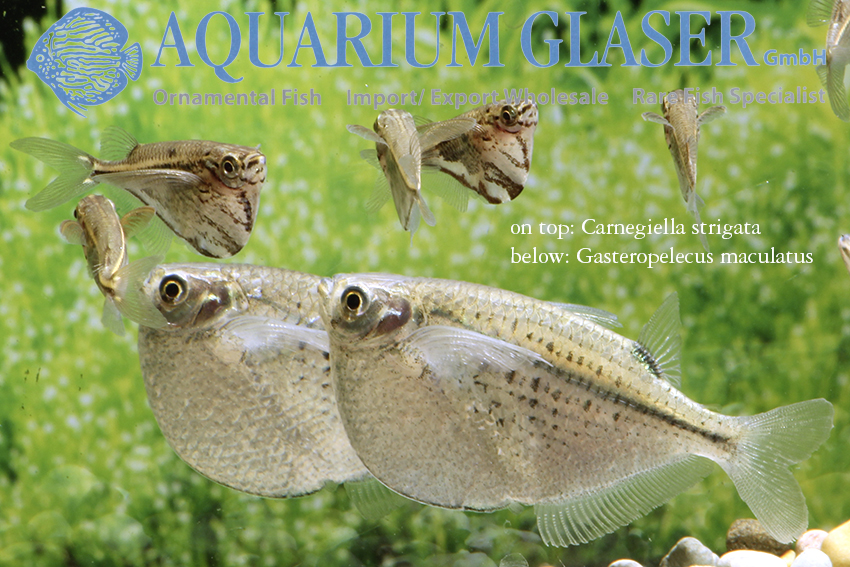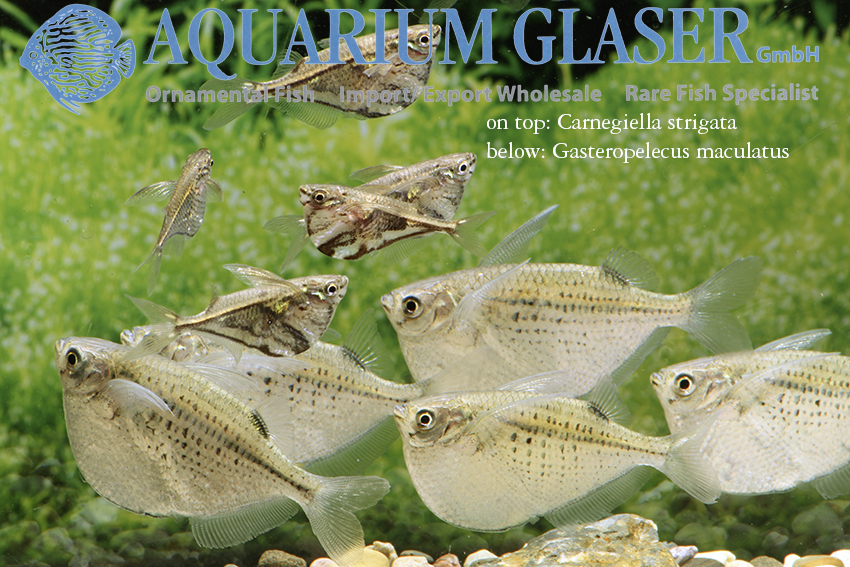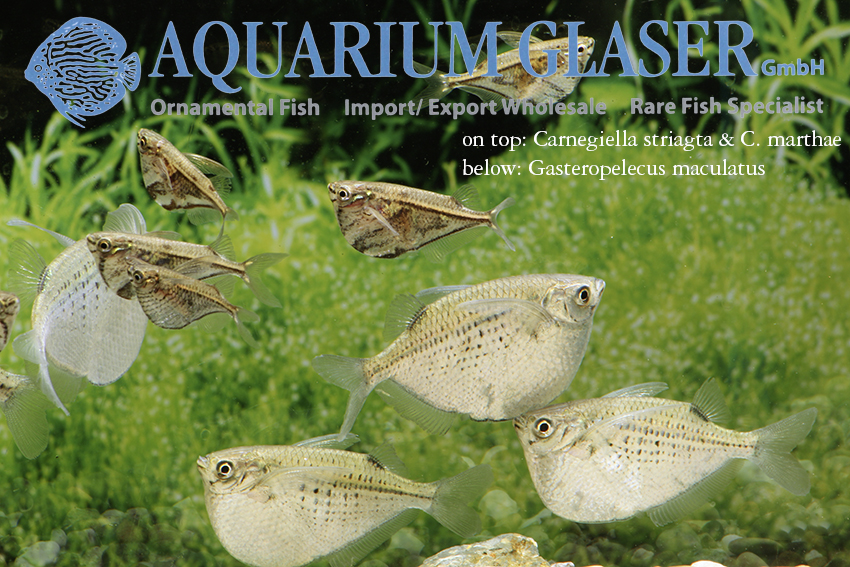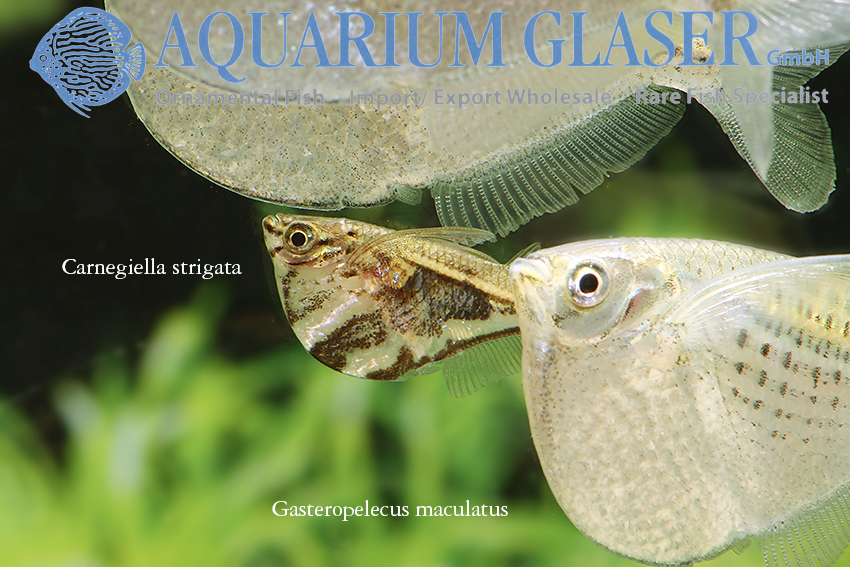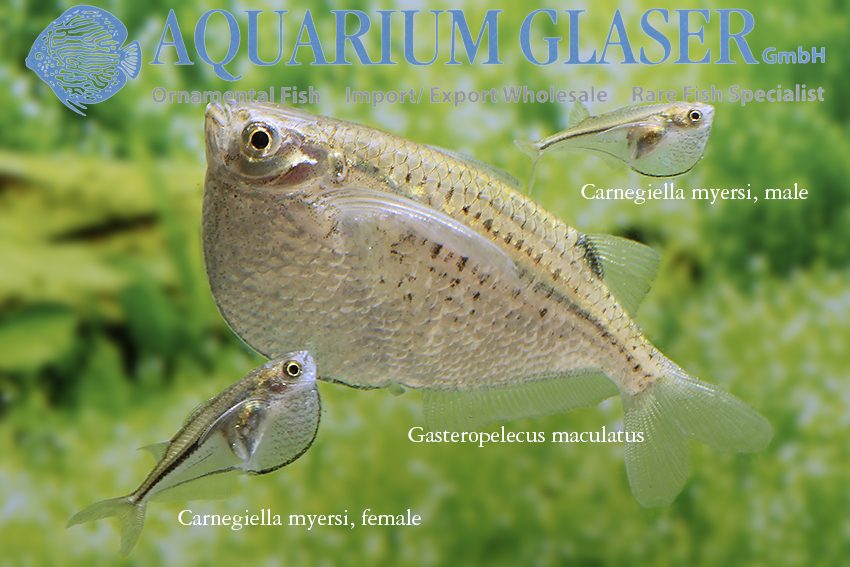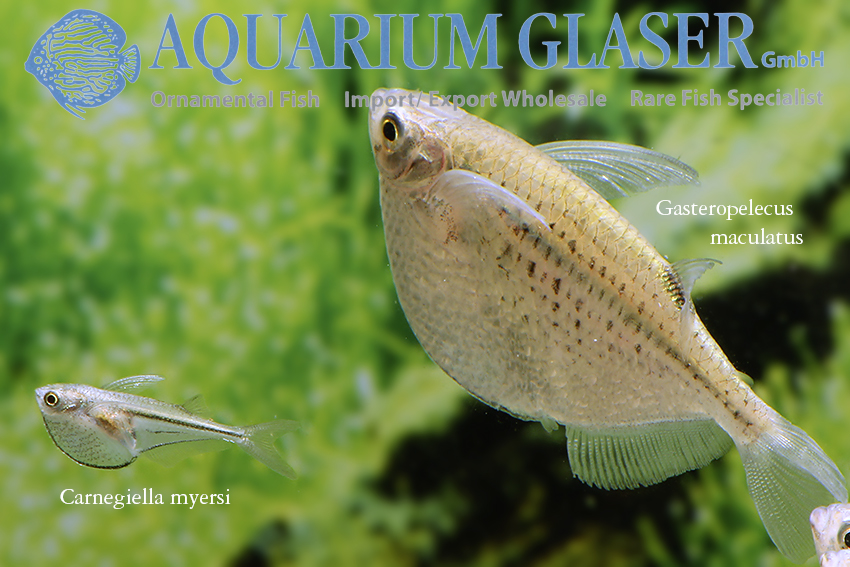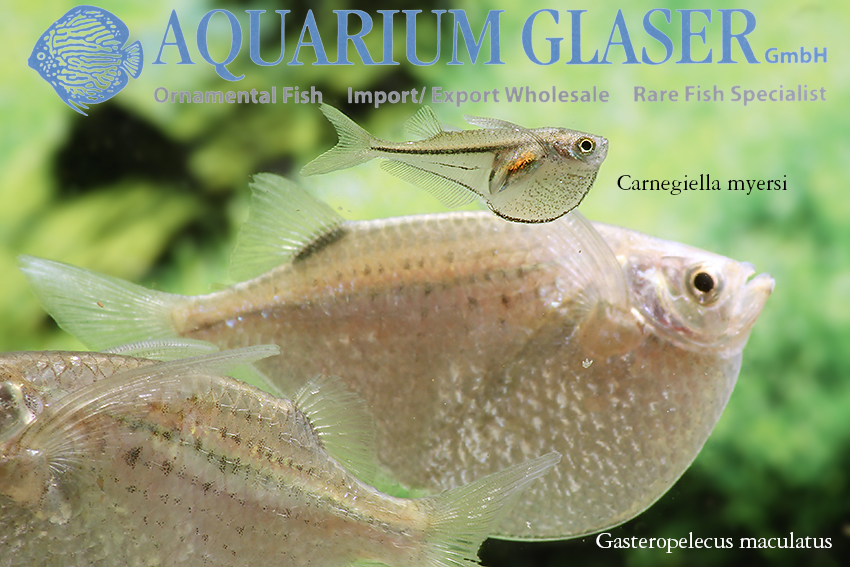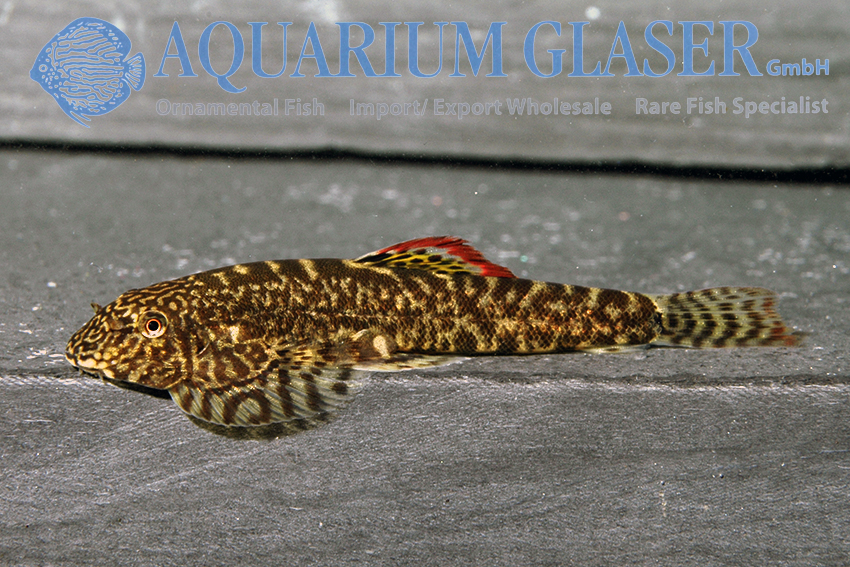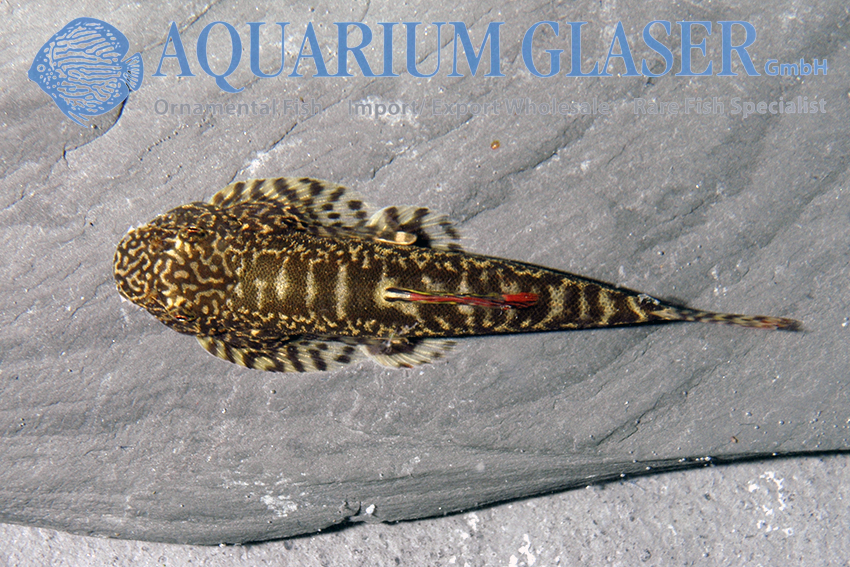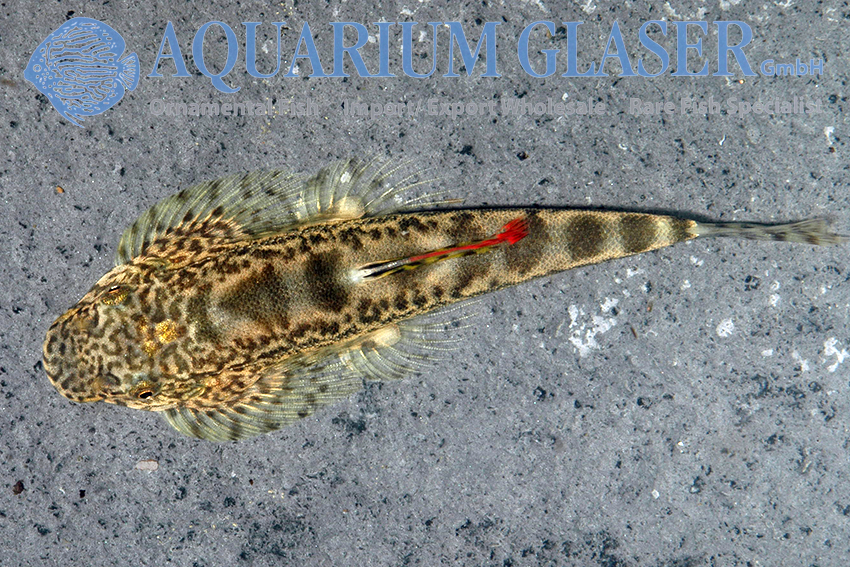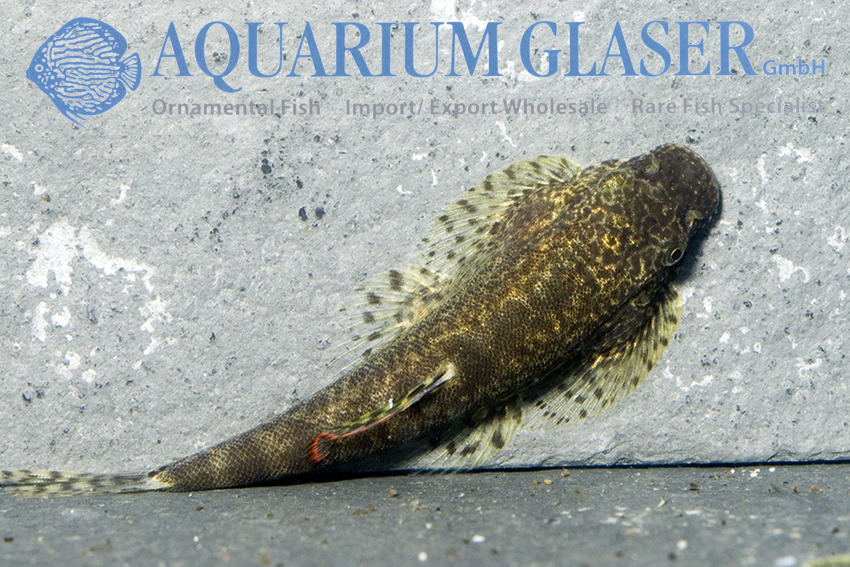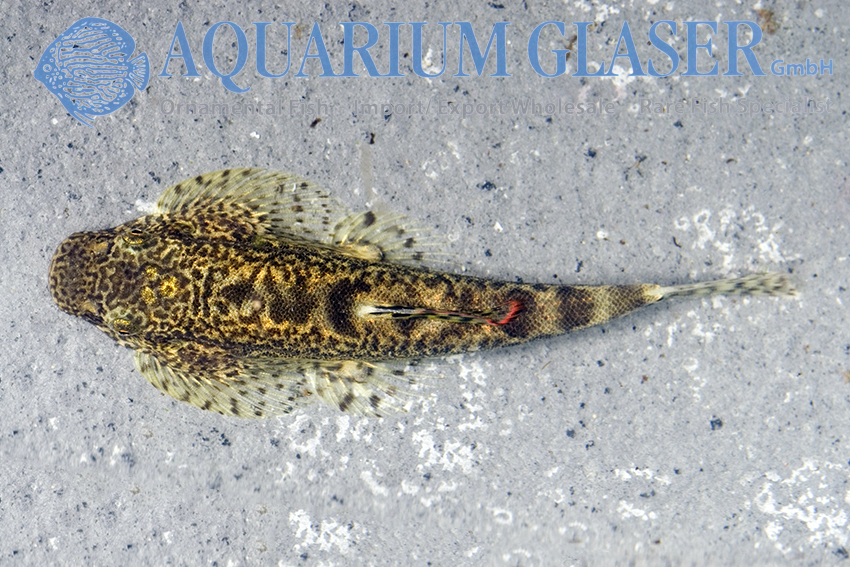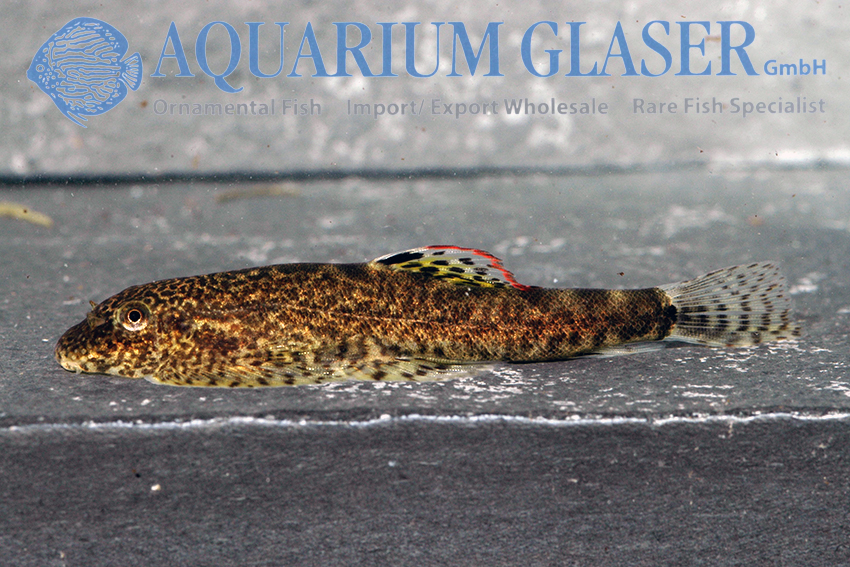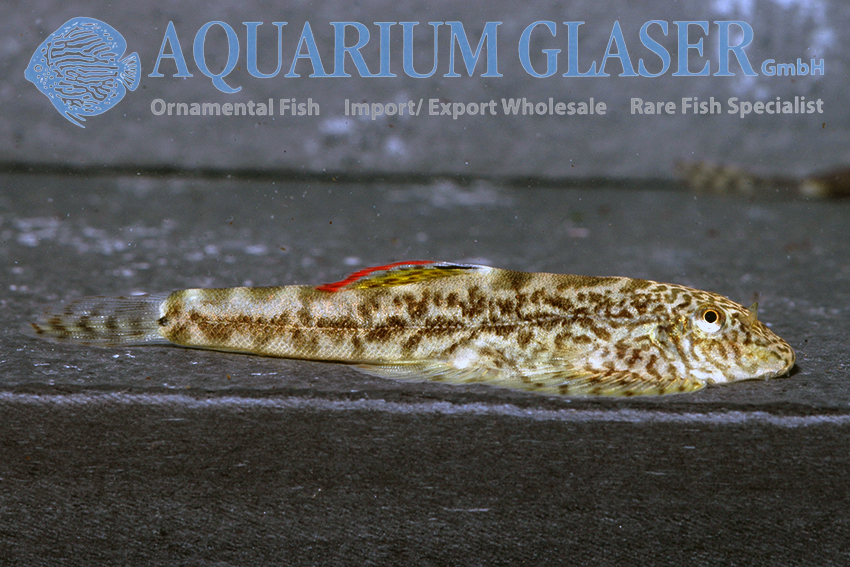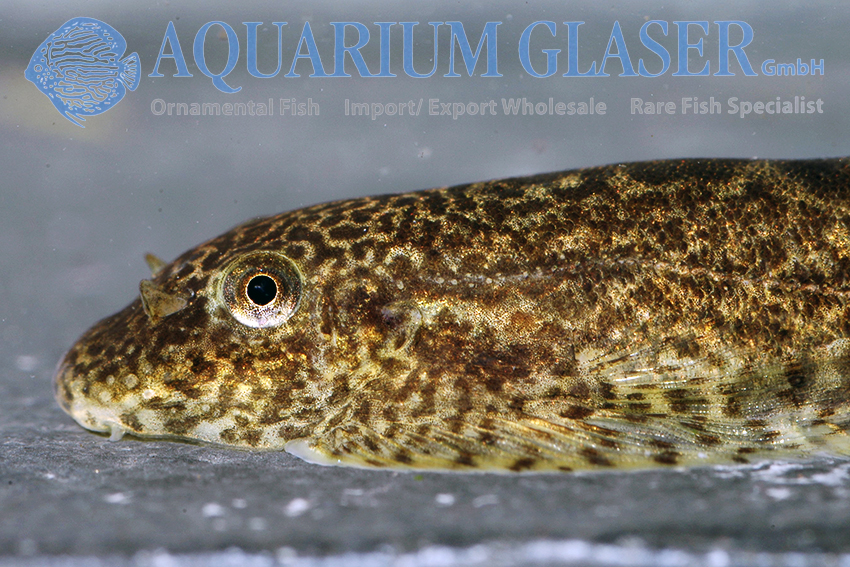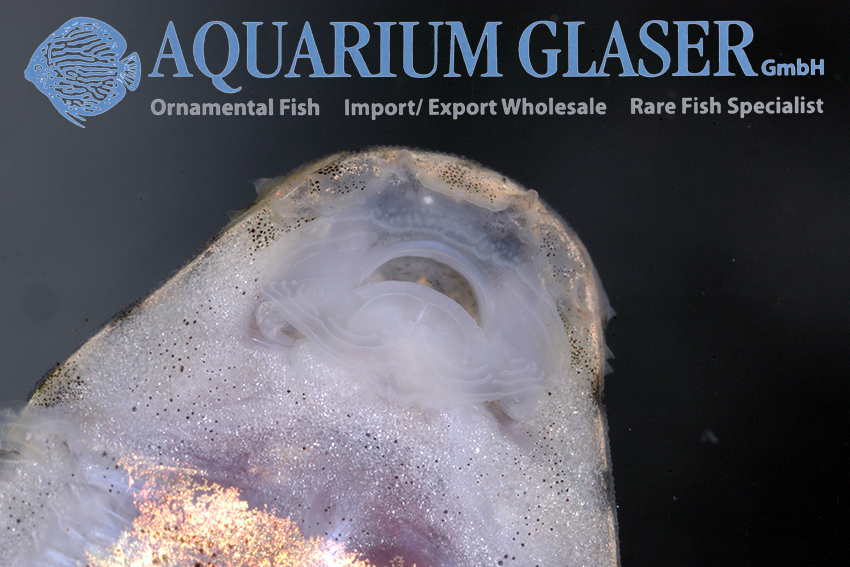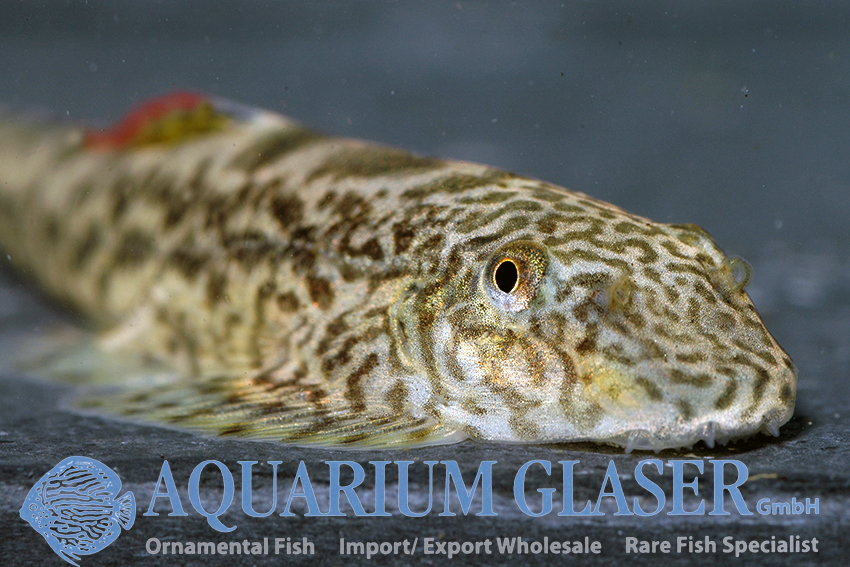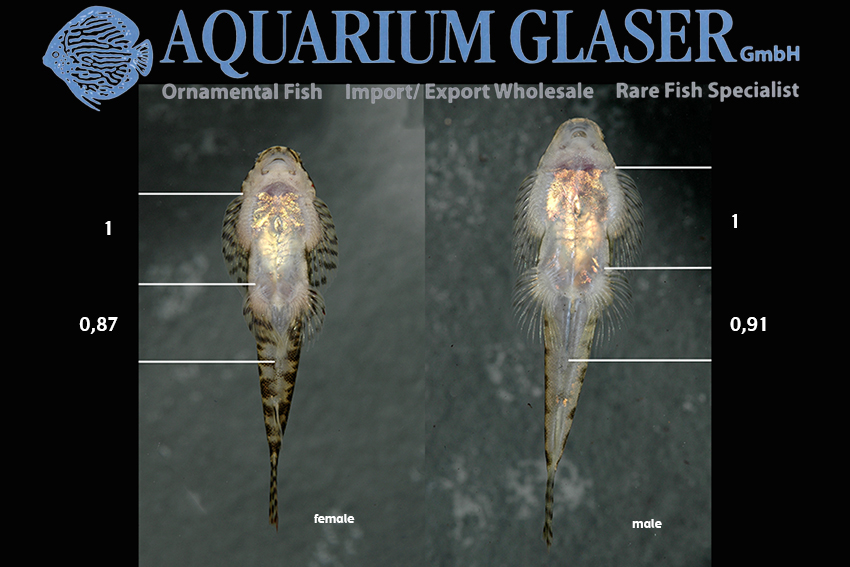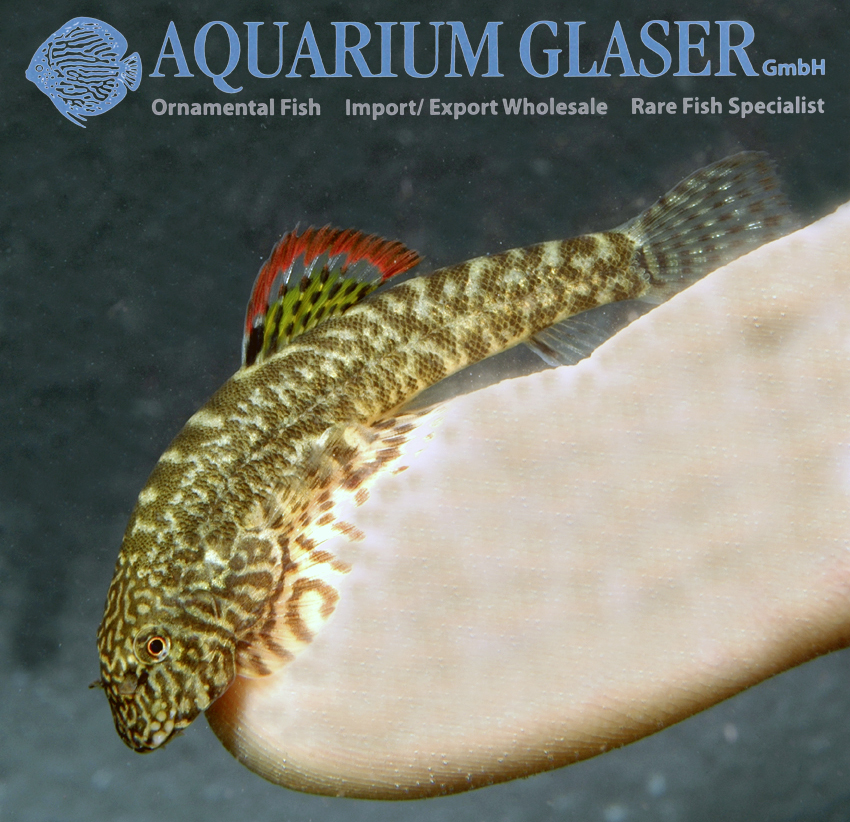The platinum hatchetfish, Thoracocharax stellatus, is regarded as biggest species of the hatchetfish. In the scientific literature, up to 6.8 cm of standard length (without tail fin) are indicated for the species. However, much smaller animals are always imported. The specimens that we currently offer as “large” have a standard length of about 3.5-4 cm.
Thoracocharax stellatus is mostly imported from Colombia. From there we have now received Gasteropelecus maculatus, which can compete in size with Thoracocharax. They have about 6 cm standard length, so with caudal fin almost 7 cm. G. maculatus is very similar to Thoracocharax, mainly because of the dark base of the dorsal fin and was placed at times in the genus Thoracocharax, indeed.
From Peru we have the smallest of all hatchet belly fish in stock, the glass or dwarf hatchet Carnegiella myersi. Large females of this species reach only 2.2 cm standard length, males are even smaller.
If you read these numbers, the differences may not seem so big, but if you can see the animals together – wow! It’s especially funny when a tiny male Carnegiella is displaying in front of a specimen of G. maculatus, which must appear to him as a “super woman”…
For this post we have also made pictures of the probably most famous and popular of all hatchet fishes, the marble hatchet (Carnegiella strigata), together with the jumbo maculatus. The marble hatchets are already fully grown.
For our customers: T. stellatus “lg” has code 297003, G. maculatus “Jumbo” 254207, C. myersi 214102 , and C. strigata 214203 on our stocklist. Please note that we only supply wholesalers.
Text & photos: Frank Schäfer





